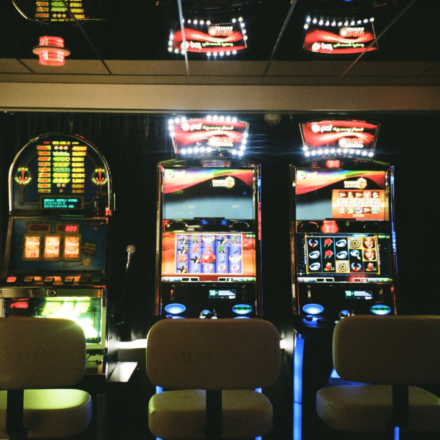Observation is at the heart of understanding opponents’ strategies. Players uncover valuable patterns by carefully watching behaviors such as aggression frequency, fold-to-bet ratios, and positional tendencies. For instance, a competitor with a high fold percentage to three-bets may be vulnerable to exploitation when pressured preflop. These tendencies often aren’t obvious on the surface but become clear after meticulous observation.
Beyond numerical tendencies, physical actions like how opponents glance at their hole cards or slide chips to the center can act as signals. Are they deliberate and smooth or quick and jittery? These seemingly minor details hold weight in live play. The best players recognize that observation is not just about what is seen but also about what is inferred from repeated behaviors.
Decoding Opponent Consistency
Consistency, or the lack of it, often reveals the true nature of a player’s strategy. Patterns emerge by carefully observing how an opponent behaves in routine situations. Some players bet small on strong hands to lure action. Others aggressively raise with marginal holdings to generate folds. These tendencies can be cataloged and leveraged against those who fail to adjust as the table dynamics shift.
An integral part of this process is exploiting betting patterns. For example, noticing an opponent’s larger bet sizing in bluff-heavy scenarios can provide an edge later. Combining this with cues from physical tells or timing ensures well-rounded decision-making. Spotting inconsistencies also helps players distinguish between a calculated bet and an emotional decision, which can often be the difference between winning and losing a key pot.
The Psychological Layer
Observation extends beyond mechanics into opponents’ emotional cues. When analyzed objectively, micro-expressions like a raised eyebrow or subtle smile add layers to a player’s behavioral profile. Physical reactions to hole cards or the flop offer insight into perceived hand strength.
This information becomes especially relevant in close decisions. For example, in a marginal all-in situation, picking up on a player’s discomfort through patterns like chip fumbling or shallow breathing can sway a reluctant call into a confident fold. Mastering the mental framework of analyzing an opponent’s sentimental baseline can be as impactful as memorizing game theory models. An observant player not only detects an opponent’s emotions but also controls their own to avoid giving away unintended information.
Adjustments at the Table
Position affects everything in poker. Skilled observers adjust by studying how opponents approach early, middle, and late positions. Players who rarely defend their big blind or avoid three-betting from early positions give themselves away over time. The necessary data points emerge with repeated observations of these positional tendencies.
This adds strategic depth. For example, weaker players in late positions may constantly limp behind raises and expose their aversion to aggression. Knowing this allows the better player to isolate and c-bet often and gather chips from those unwilling to fight back. Adapting strategy based on opponent behavior is an advanced skill that separates elite players from those simply following textbook approaches.
Technology vs. The Human Eye
Poker tools like hand trackers and solvers provide undeniable aid in profiling opponents. Statistical software can identify unusual frequencies more quickly than the human brain. Yet, the debate persists. Does real-time observation outperform technological reliance in live games?
Supporters of human observation argue that software misses nonverbal tells such as timing discrepancies or physical actions. These subtleties frequently dictate live decision-making but rarely register in algorithm-driven tools. Meanwhile, advocates for technology counter that the consistency of data is unmatched by a human-only approach. They value numbers over hunches and believe statistical edges are more reliable than reading vague body language.
Ultimately, a hybrid approach of leveraging both external tools for statistical accuracy and internal observational skills for live play appears to be the optimal middle ground. Players who can merge data with instinct gain the greatest advantage.
Adaptation Amidst Time Pressure
A poker game’s pace leaves little room for hesitation. Observation, therefore, must be efficient. Combining swift mental calculation with player profiling is where amateur players often falter. Those who cannot process cues within rapid hand intervals fail to adjust to table dynamics accurately.
The key lies in preparation. Poker teaches its students to break down moves into categories and analyze their immediate relevance. For instance, reading a desperate or over-aggressive bet might signal an opponent’s frustration from recent losses.
At its core, poker rewards the player whose observational skills sharpen faster. A player carves out a well-rounded edge by studying behavioral subtleties, adapting to positional tendencies, and incorporating every visual and oral clue into the plan. Developing the ability to swiftly process these observations without overthinking is a defining trait of a top-tier competitor.
The Power of Silent Observation
Many amateur players make the mistake of focusing only on hands they are actively involved in. However, the most successful professionals spend time observing hands they are not playing. By silently watching every opponent, a player gathers information without the distraction of their own hand strength influencing their analysis.
This strategy allows players to notice tendencies they might otherwise miss—such as a player who suddenly bets bigger in bluff situations or one who takes longer to act when facing tough decisions. Silent observation creates an invaluable catalog of information that can be applied when the stakes are highest.
Additionally, experienced players often use observation to track psychological changes in their opponents. Recognizing when a player is on tilt, frustrated by recent losses, or shifting their strategy out of desperation allows for well-timed aggression. This ability to sense subtle emotional shifts can be the difference between capitalizing on an opponent’s mistakes and missing a crucial opportunity.
Conclusion
Observation remains one of the most underutilized yet powerful skills in poker. While many players focus on memorizing charts or refining technical play, the ability to accurately read opponents in real-time provides an unparalleled strategic advantage. Whether identifying bet sizing patterns, emotional shifts, or positional tendencies, sharp observation allows players to stay one step ahead.
In an era where poker tools and analytics dominate, the human ability to interpret real-time behavior still holds immense value. The best players seamlessly combine data-driven decision-making with live-table awareness, ensuring they can adapt to any game environment. The poker table is more than just a battleground of cards—it’s a test of perception, and those who master the art of observation will always have an edge.



